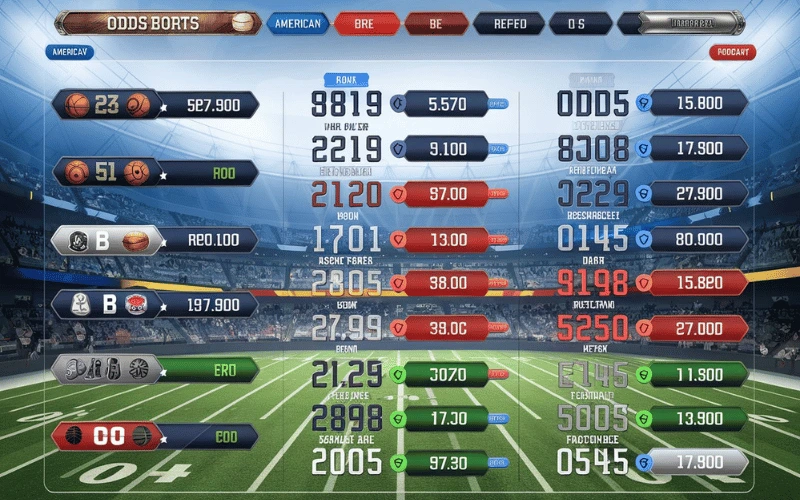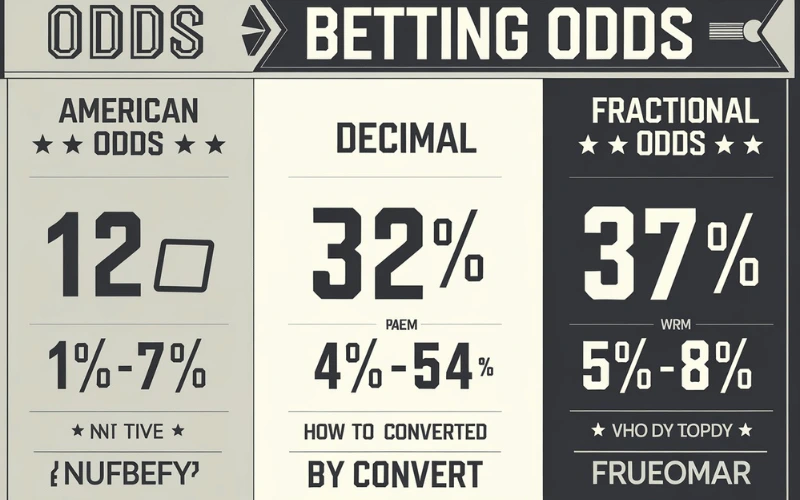Sports betting has grown exponentially in recent years, thanks to the rise of online platforms and live betting options. Whether you’re a seasoned bettor or new to the world of sports wagering, understanding sports betting odds is crucial for making informed decisions. In this guide, we’ll break down everything you need to know about betting odds, online betting odds, and live betting odds.
What Are Betting Odds?
Sports betting odds are numerical representations that reflect the likelihood of a particular outcome happening in a sporting event. They also determine how much you can win on a wager. Betting odds are typically presented in three main formats: decimal odds, fractional odds, and moneyline odds.
- Decimal Odds: Popular in Europe, decimal odds are simple to understand. They represent the total payout a bettor will receive if their wager wins. For example, if the odds are 2.50 and you place a 10 bet, you will receive 25 if you win (which includes your original stake).
- Fractional Odds: Common in the UK, fractional odds are written as fractions (e.g., 5/1 or 3/2). The first number indicates how much profit you will make for every amount bet (the second number). For example, odds of 5/1 mean for every 1 you bet, you’ll win 5.
- Moneyline Odds: Widely used in the US, moneyline odds are represented as positive or negative numbers. A positive number (+200) indicates how much profit you’ll make on a 100 wager, while a negative number (-150) shows how much you need to bet to win 100.
How to Read Online Betting Odds
When sports betting odds are provided for every event and market, giving bettors a range of options. Online betting odds are dynamic and can fluctuate based on factors such as team form, injuries, and market sentiment.
Online sportsbooks display sports betting odds in various formats, and it’s important to know how to interpret them. Most reputable online betting platforms allow you to toggle between decimal, fractional, and moneyline odds to suit your preference. For instance:
- In a football match between Manchester United and Liverpool, the odds might be displayed as:
- Manchester United: 2.00
- Liverpool: 3.00
- Draw: 3.50
Here, if you bet $10 on Manchester United and they win, you’ll get $20 in return, with a $10 profit. Similarly, a bet on Liverpool would return $30, and a draw would return $35.
Understanding Live Sports Betting Odds

Live sports betting—also known as in-play betting—has revolutionized the sports betting landscape. Unlike traditional betting, where you place a wager before an event starts, live betting allows you to place bets while the event is in progress. This creates dynamic odds that shift based on what’s happening in real-time.
For example, in a tennis match, if Player A starts strong but begins to falter in the second set, the online sports betting odds may change to reflect Player B’s improved chances of winning. Live betting odds can move quickly, and successful live bettors often need to act fast to take advantage of favorable odds.
- Advantages of Live Betting:
- Real-time action: You can adjust your betting strategy based on the flow of the game.
- More market options: Live betting offers a wider range of bets, including next goal, next set, or next point.
- Better odds: Live odds can sometimes be more favorable than pre-match odds, especially if you’re able to anticipate a turnaround in the game.
Factors Affecting Sports Betting Odds
Several factors can influence sports betting odds, whether they are offered online or live:
- Team/Player Performance: Sports Betting odds fluctuate based on the recent performance of teams or players. Injuries, form, and even weather conditions can impact how odds are set.
- Betting Volume: When a large number of bets are placed on a particular outcome, sportsbooks may adjust the odds to balance their risk. For example, if most bets are placed on Team A, the odds may shorten, while the odds for Team B lengthen.
- Market Sentiment: Public perception plays a role in setting odds. For example, a team with a large fan base may have shorter odds simply because more people are betting on them, even if their actual chances of winning aren’t as high.
- Real-Time Events: In live betting, everything from a player getting sent off to a change in weather conditions can influence the odds.
Tips for Betting on Sports
- Do Your Research: Always research teams, players, and events before placing a bet. Look into stats, injury reports, and previous matchups to inform your decisions.
- Compare Odds: Different online sportsbooks offer varying odds for the same event. Take the time to compare odds to maximize your potential winnings.
- Manage Your Bankroll: Set a budget for your bets and stick to it. Betting can be unpredictable, so it’s important not to chase losses or bet more than you can afford to lose.
- Take Advantage of Live Betting: Live betting offers the chance to adapt your strategy in real time. Watching the game as it unfolds allows you to place more informed bets based on the actual action.
Conclusion
Understanding live sports betting odds is essential to improving your betting experience, whether you’re placing wagers online or in real-time. With the right knowledge, you can make more informed decisions, take advantage of favorable odds, and ultimately enhance your chances of success. Whether you’re a casual bettor or a seasoned pro, mastering the different types of odds and knowing how to read them will help you navigate the exciting world of sports betting.







